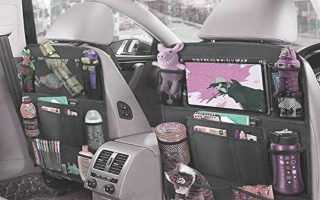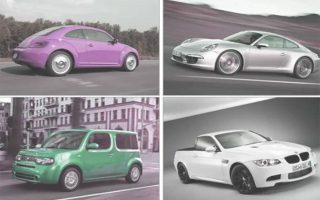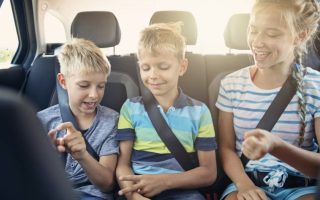The allure of a convertible car, with its open-top design and wind-in-your-hair experience, is undeniable. For many, it’s a symbol of freedom and a fun way to enjoy the road, especially on warm summer days.
However, when it comes to driving your children in a convertible, safety considerations take precedence.
While the image of cruising down the coast with the top down is tempting, it’s crucial to weigh the benefits and potential risks of having your little ones in a convertible car.
Safety Features and Considerations
Convertible cars have come a long way in terms of safety features. Modern models are equipped with reinforced frames, roll bars, and advanced restraint systems.
Many also come with side airbags that provide additional protection in case of a rollover or side impact collision. These features contribute to enhancing the overall safety of the occupants, including children.
Child Car Seats
One of the primary concerns when driving with children in a convertible is the use of child car seats. Convertible car seats, specifically designed to accommodate infants and toddlers, can be used in convertibles.
It’s important to follow the manufacturer’s guidelines and ensure proper installation of the seat. Additionally, the car seat should be secured facing the rear of the vehicle to provide maximum protection in case of an accident.
Sun and Weather Protection
Convertibles often lack the structural protection of a traditional closed-roof vehicle, leaving passengers more exposed to the elements.
Sunburn, windburn, and excessive exposure to UV rays are serious concerns, especially for young children.
To mitigate these risks, parents can use appropriate sunshades, hats, and protective clothing, as well as apply sunscreen to exposed areas.
Risk of Ejection
One of the major safety considerations with convertibles is the risk of ejection during a crash.
Open-top vehicles lack the protective enclosure provided by a solid roof, which may increase the risk of occupants being thrown from the vehicle.
To mitigate this risk, it’s crucial to ensure that all passengers, especially children, are securely fastened with seat belts or appropriate restraints at all times while the vehicle is in motion.
Impact on Hearing and Comfort
Convertibles are known for their distinctive engine noise and wind turbulence, which can be amplified with the top down.
Extended exposure to loud noise levels can potentially affect children’s hearing, and the wind can cause discomfort.
Parents should consider using hearing protection for young passengers and ensure their comfort during the ride.
Safety First
Driving your children in a convertible car can be an enjoyable and memorable experience, provided that safety remains a top priority.
With modern safety features, proper use of child car seats, protective measures against the sun and weather, and careful attention to ejection risks, the joys of a convertible can be enjoyed responsibly.
As a parent, it’s your responsibility to make informed decisions that prioritise the safety and well-being of your little passengers, allowing everyone to have a delightful ride while keeping risk factors in check.
Final Words: Is It Better to Simply Avoid Convertible Cars Until Your Kids Grow Up
Travelling with children requires special attention to their safety and comfort, and while convertibles offer an exciting driving experience, they may not be the ideal choice for family trips. Convertibles present unique challenges that could impact the well-being of young passengers in different ways.
First of all, convertibles lack the enclosed structure of traditional vehicles, potentially exposing children to greater risks in case of accidents.
The absence of a solid roof increases the chance of ejection and reduces the protective barrier during a collision. Safety is paramount, and closed-roof cars offer a more secure environment for kids.
Second, the open design of convertibles exposes children to fluctuating weather conditions. Wind, rain, and intense sunlight can cause discomfort, sunburn, and windburn.
Ensuring their safety from these elements may require constant adjustments and additional protective measures, making the journey less enjoyable and even stressful.
Lastly, convertibles often produce higher noise levels due to wind turbulence and road noise. Extended exposure to loud sounds may affect children’s hearing and overall travel experience.
Additionally, the potential for distractions caused by the novelty of a convertible’s features could divert the driver’s attention away from focusing solely on the road.
At the end of the day, while convertibles offer an exhilarating ride, the safety, weather vulnerability, and potential distractions they present might not be conducive to a stress-free and secure journey with children.
Opting for a closed-roof vehicle provides a safer, more controlled, and comfortable environment, ensuring a more enjoyable travel experience for the entire family.
After all, if you really want to enjoy driving a convertible car, it will be better to share the experience with your partner, friends or adult relatives only (such as brothers or sisters for example). When it comes to your kids, it will be much better to choose a traditional vehicle.

My name is Rebecca McCarthy and I am an American girl with British heritage residing in the beautiful city of Nashville, Tennessee. I have always had a keen interest in cars, particularly brand new ones that showcase the latest technology and design features. I am also passionate about travelling and experiencing new cultures, as well as enjoying hot summer days with friends and family.



